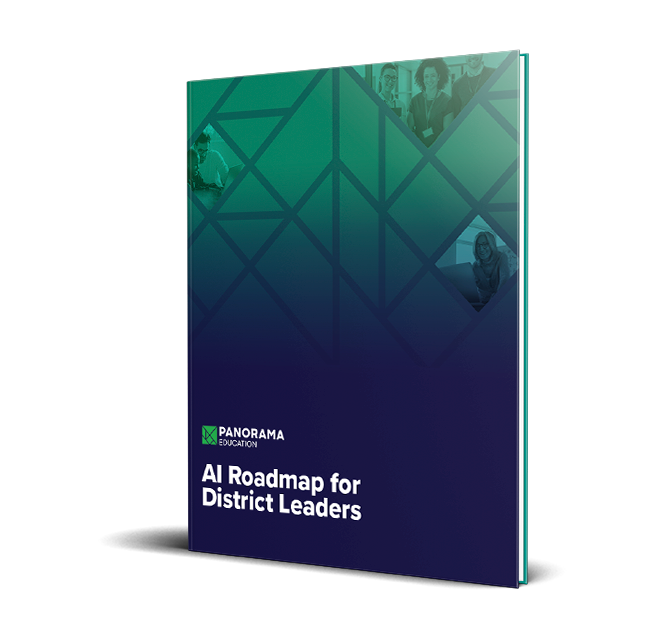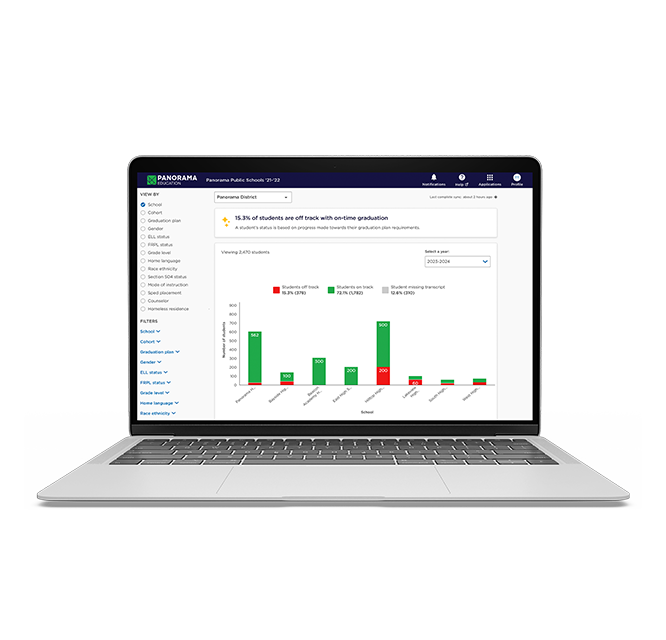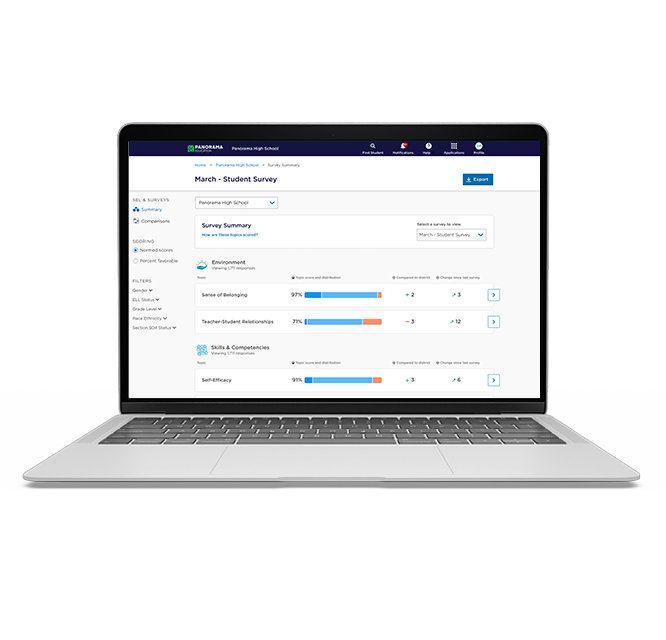Middle school is a time of enormous change. Students are navigating academic pressure, intense emotional growth, and new behavioral expectations—all while trying to figure out who they are. These transitional years can be overwhelming for both students and the educators who support them.
That’s where MTSS for middle school comes in.
MTSS, or multi-tiered system of supports, is a framework that helps schools proactively identify and meet students’ academic, behavioral, and emotional needs through tiered levels of support.
Let’s explore what MTSS means for middle school, why it matters during these pivotal years, and how educators can implement it effectively. From real-world strategies to data-driven decision-making, this guide will equip you with the tools to help every middle schooler thrive.
Get started with our Interventions and Progress Monitoring Toolkit
What Is MTSS and Why It Matters in Middle School
At its core, MTSS is a proactive and data-informed approach to supporting students across academics, behavior, attendance, and life skills. It uses three tiers of intervention to ensure that every student—whether they’re excelling or struggling—gets the right level of support at the right time.
Every district’s MTSS framework is unique, but they all share a few essential components:
- Tiered interventions
- Data-based decision-making
- Progress monitoring
But what makes multi-tiered support systems in middle school so important?
In middle school, students are transitioning from the structured environment of elementary school to the increased independence of high school. It's a critical window for identifying early warning signs related to dropout risk, chronic absenteeism, and behavioral issues. Implementing a middle school MTSS framework allows schools to intervene early, personalize supports, and promote student success in every domain.
Core Components of MTSS in a Middle School Setting
MTSS operates through three distinct tiers, each offering a different level of support. Traditionally, the MTSS framework is visualized as a three-tiered pyramid, with Tier 1 at the bottom and Tier 3 at the top.

An example of the MTSS pyramid
Tier 1: Universal Instruction (All Students)
Tier 1 describes the schoolwide practices in place for all students. Teachers use strategies that are proven by research to work for most students. They regularly check in on student progress with assessments and progress monitoring. The goal is to ensure that the majority of students succeed with standard instruction.
In a middle school setting, Tier 1 might include:
- High-quality core instruction
- School-wide behavior expectations (e.g., PBIS)
- Daily attendance monitoring
Tier 2: Targeted Supports (Some Students)
Students who need additional support beyond Tier 1 may receive Tier 2 interventions. These interventions are focused on specific skills or goals and often include small-group instruction. Students working on the same strategies may be grouped together to work with a teacher or interventionist.
Middle school Tier 2 support could look like:
- Academic support groups during flex periods
- Behavior interventions like Check-In/Check-Out
- Attendance nudge letters to families
Tier 3: Intensive Interventions (Few Students)
If a student still has learning gaps after receiving targeted Tier 2 support, they may receive Tier 3 interventions. Tier 3 is intensive, one-on-one support with interventions that are individualized to the student’s specific needs.
Middle schoolers receiving Tier 3 support could receive:
- One-on-one tutoring or counseling
- Wraparound services involving families and community partners
- Referrals for special education services
How to Implement MTSS in Middle School
Implementing MTSS in middle school takes more than adopting a framework—it requires clear steps, shared commitment, and a structured plan that evolves with students’ needs. Below are the essential steps schools can follow to put MTSS into action successfully, along with examples of effective middle school MTSS strategies.
1. Establish a Collaborative MTSS Team
Start by forming a school-based MTSS leadership team that includes administrators, general and special education teachers, counselors, interventionists, and other support staff. This team becomes the hub for decision-making, coordination, and progress monitoring.
Define clear roles and responsibilities for team members so everyone knows what their job is. Schedule regular MTSS meetings to review data and adjust interventions. Consider grade-level representatives or MTSS “champions” to support implementation across departments.
2. Identify Student Needs Using Data
Use universal screening tools to proactively identify students who may need support. Implement these screeners multiple times a year to track trends, and establish early warning indicators to easily analyze assessment results.
A data-driven approach lays the groundwork for strategic, equitable interventions and helps ensure MTSS progress monitoring in middle school is ongoing and actionable.

Proactively identify who needs support with Panorama Student Success
3. Create a Schedule That Supports Intervention Time
Time is one of the biggest barriers to effective implementation. Design a master schedule that protects time for interventions and support. Add daily or weekly flex blocks, WIN (What I Need) time, or small-group labs. Use advisory periods for Tier 1 life skills instruction, mentoring, or study skills.
Ensure Tier 2 and Tier 3 supports can happen without pulling students from core instruction unnecessarily. Remember that all students should receive Tier 1, not just those who don’t need additional support. A well-planned schedule enables smoother delivery of multi-tiered support systems in middle school.
4. Implement Tiered Interventions Across Domains
Activate supports across all three tiers and domains—academics, behavior, attendance, and life skills. Examples of middle school MTSS strategies include:
- Tier 1: life skills lessons during advisory, clear behavior expectations, and daily attendance incentives
- Tier 2: CICO, academic pull-out groups, behavior contracts tailored to student goals
- Tier 3: Individual counseling, family meetings, and wraparound services
5. Continually Track Progress and Adjust Supports
Use consistent progress monitoring tools to track academic growth, behavior improvements, and life skill development. Set clear goals and metrics for each intervention, and reevaluate interventions every 6–8 weeks in MTSS team meetings.
A sustainable MTSS thrives in a culture that values growth and collaboration. Use feedback from staff and students to improve practices over time. Ensure schoolwide buy-in through professional development, clear communication, and celebrating small wins.
Data-Driven Decision Making in Middle School MTSS
A strong MTSS framework relies on more than just well-designed interventions—it depends on high-quality, actionable data. For middle school MTSS to be effective, schools must systematically collect, analyze, and respond to a range of student data points.
Middle schools should take a comprehensive approach to data collection by pulling from multiple domains to understand the full picture of a student’s experience. Key MTSS data to monitor include:
- Academic Performance: Grades, curriculum-based measures, benchmark assessments, and state testing data
- Behavioral Data: Office discipline referrals, classroom behavior logs, positive behavior points, and teacher observations
- Attendance: Chronic absenteeism, tardiness, and patterns of attendance by time of year or day of the week
- Life Skills and Engagement: Panorama surveys, student voice tools, and engagement check-ins
By using a mix of quantitative and qualitative indicators, educators can make more nuanced decisions that go beyond surface-level data.
Using Screening Tools and Early Warning Indicators
Universal screeners are the first line of defense in an effective MTSS. These tools—whether academic diagnostics, behavior screeners, or surveys—help schools proactively flag students before problems escalate.
Alongside these, many schools use early warning systems (EWS) that combine data from multiple domains to identify students at risk of academic failure, chronic absenteeism, or behavioral issues. For middle schoolers, these indicators are especially critical as they transition to adolescence—a phase where disengagement often begins.
Examples of effective early warning indicators include:
- A drop in GPA of half a point or more
- Two or more office discipline referrals in a grading period
- Missing 10% or more of school days
- A negative change in survey results or teacher-reported engagement
Additionally, schools use progress monitoring tools to collect frequent data for students receiving Tier 2 or Tier 3 support. These measures help teams track small gains over time and make responsive instructional changes.
Common MTSS Middle School Challenges
Implementing MTSS in middle school isn’t always easy. Here are a few common hurdles and potential solutions for your school:
1. Teacher Buy-In
Challenge: Staff may view MTSS as “one more thing” on top of an already full plate.
Solution: Involve teachers early in the process. Provide clarity around the purpose of MTSS, offer ongoing professional development, and highlight success stories from their own students to build momentum and trust.
2. Time and Scheduling
Challenge: It’s hard to find consistent time for Tier 2 and Tier 3 interventions without pulling students from core classes.
Solution: Build dedicated intervention blocks into the master schedule and leverage existing periods like advisory or flex time. Consider rotating support during non-core subjects to protect academic time.
3. Tracking Interventions Across Teams
Challenge: Communication gaps between grade-level teams, specialists, and counselors can lead to duplicated efforts—or worse, missed opportunities to support students.
Solution: Use a centralized platform to log interventions, monitor student progress, and streamline communication. Regular MTSS team meetings also help keep everyone aligned.
4. Inconsistent Use of Data
Challenge: Teams may struggle to interpret or act on data consistently, especially when pulling from multiple sources.
Solution: Provide staff with clear data protocols and training on how to use tools like universal screeners, early warning indicators, and progress monitoring trackers. Centralizing data in one platform makes it easier to visualize trends and take action.
Overcoming these MTSS implementation barriers will help schools move past challenges and toward sustainable success.
A Holistic Approach to Middle School Support
MTSS isn’t just about academics—it’s about holistic student success. Successful frameworks integrate supports across behavior, life skills, and attendance for a comprehensive approach to student achievement.
But managing all this information manually can be overwhelming, especially in a busy middle school setting. That’s why many schools turn to centralized platforms like Panorama Student Success to organize data, visualize trends, and support collaboration.
With a holistic MTSS platform in place, teams can:
- Monitor academic, behavior, life skills, and attendance data in one place
- Automatically flag students for intervention
- Track the fidelity and outcomes of interventions over time
- Share updates across staff to ensure continuity and transparency
MTSS Meets AI: Scaling What Works
MTSS is a proven framework for student success—but consistent, high-quality implementation can take time educators don’t always have. Proven to increase math and reading scores, Panorama Student Success provides the foundation, helping districts organize intervention plans, monitor progress, and drive student outcomes.
Panorama Solara accelerates the process, using AI to turn data into action faster. Panorama Solara is a leading customizable, district-wide AI platform that streamlines student supports while ensuring robust data protection and privacy. Tailored to support your district’s goals and practices, Panorama Solara fits seamlessly into your district processes, so it works the way you do.
With Panorama Solara, educators can access a secure chat interface with education best practices and district-specific customizations. Using pre-built prompts, they can create personalized student supports—like intervention plans and family letters—faster and more efficiently. For administrators, Panorama Solara offers full visibility into AI usage trends, ensuring that all AI activity remains private, secure, and aligned with district standards. It's the essential platform for safe and effective AI in today’s schools and districts.
Ultimately, AI enhances—but doesn’t replace—MTSS practices, making support more efficient and scalable. Together, Student Success and Solara help districts implement MTSS with greater impact—ensuring every student gets the help they need.







.webp)


![How AI Ready Is Your District? [Infographic]](https://www.panoramaed.com/hubfs/iStock-1912513615.jpg)